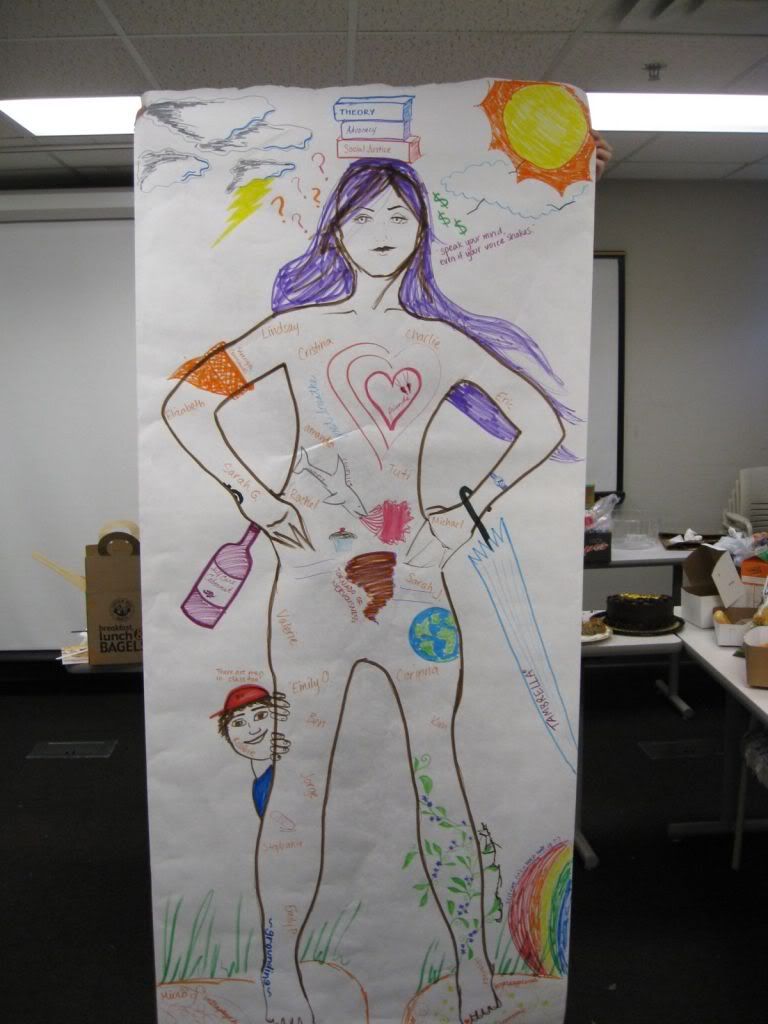If you’re a regular reader of the KBlog, you’ll recall KG’s favorite productivity tips for staying focused and organized. In the third and final segment in our productivity series, we share our favorite miscellaneous productivity tools and tricks that help make the KG team shine!
Brittany
 Google Voice: So chances are that you’ve heard of Google Voice before, but on the off-chance you haven’t, let me be the first to tell you how cool it is to not have to listen to voicemails anymore. If I have to miss a call because I’m on another call, I almost instantly receive an email and a text transcription of the voicemail–quite the perk for someone like me who dislikes listening to five consecutive messages of “Hi Brittany, it’s your mom. Call me back!” to get to the message left by a client. (Aside: I can’t be the only person whose mom doesn’t trust that my phone will tell me I missed her call without needing to leave a message.) Especially effective for people with multiple phone numbers (home, work, cell), Google Voice gives users the option to use a single Google forwarding number to all of the user’s phones, so when your office phone rings when you’re out of the office, you can take the call on your cell. Brilliant! Google Voice also supports conference calling with call recording and online archiving. On top of all of that, there are lots more features, so get your Google Voice on now if you haven’t signed up yet.
Google Voice: So chances are that you’ve heard of Google Voice before, but on the off-chance you haven’t, let me be the first to tell you how cool it is to not have to listen to voicemails anymore. If I have to miss a call because I’m on another call, I almost instantly receive an email and a text transcription of the voicemail–quite the perk for someone like me who dislikes listening to five consecutive messages of “Hi Brittany, it’s your mom. Call me back!” to get to the message left by a client. (Aside: I can’t be the only person whose mom doesn’t trust that my phone will tell me I missed her call without needing to leave a message.) Especially effective for people with multiple phone numbers (home, work, cell), Google Voice gives users the option to use a single Google forwarding number to all of the user’s phones, so when your office phone rings when you’re out of the office, you can take the call on your cell. Brilliant! Google Voice also supports conference calling with call recording and online archiving. On top of all of that, there are lots more features, so get your Google Voice on now if you haven’t signed up yet.
Valerie
Good Old-fashioned Mindfulness: This one might be a “duh,” but if we were all doing it right, I have a hunch our society would be a lot different than it is. The powers of mindfulness are praised high and wide for increasing health, happiness, and productivity. Some even believe that if you focus your positive energy well enough, you can attract good things to you. Now, I don’t know if I’d go that far personally, but I do know that reminding myself to be mindful and “in the moment” can have powerful effects on my sanity and my efficiency.
Next time you find yourself scatterbrained, extremely stressed, or asking yourself “what the heck was I just doing/going to do?”, try this: Close your eyes. Take ten deep breaths and visualize all the thoughts cluttering your mind flowing out one-by-one, vanishing (poof!), leaving your head empty. (I’m saying visualize, folks – most of us are not really that good.) Then, ask yourself: What is it I really need to be focusing on right now? Try to pick one thing that’s high-priority. Open your eyes, and jot down a few steps that you can work on right now.
Eric
Session Manager: I love tabs. There are two dozen tabs open in my browser right now. Session manager helps keep those tabs safe until I’m ready to return to them.
Session Manager is an add-on for Firefox and Chrome that allows you to save the state of all windows and tabs open in your browser. This snapshot of your broswer can be saved and an unlimited number of sessions saves are allowed. Besides backing up your browsing in the event of a crash, this helps keep personal and professional browsing separate. It allows you to unplug — save your 9-5 browser windows as you’re leaving for the day, close your browser and leave your work projects until you’re ready for them. (It’s no fun to open up Chrome on Sunday morning when you’re looking for a good brunch spot on Yelp and get a big reminder of all the loose ends waiting for you Monday morning.) Or, focus on plugging back in. (If you’ve been shopping at home for a sweet new pair of slacks and reasonably priced ties, you can save those window-shopping tabs until later to avoid distraction when you get to the office.)
Caitlin
Look at the Competition: This may seem unrelated to productivity, but competition is a huge motivator, and motivation increases productivity. When I look at clients’ competitors’ news coverage or social media activity, for example, I get motivated to work really hard and to come up with new ideas to stay at the top of our game. If you’re even the slightest bit competitive like me, you’ll find your competitor’s success a perfect productivity push.
Achieving and maintaining peak performance is a constantly moving target. Just when you think you’ve cracked the code, another distraction or challenge pops up and creates room for improvement. At KG, we’re always on the lookout for the next big thing, so let us know if there’s something that works for you that we should know about!


 Let’s face it, there are some days where we just don’t want to get up and go to work – you are lying if you say otherwise. Other than those few days a year, I will say that I genuinely enjoy coming to work at our funky little offices. Why? I love the people that I work with! We are like a family here. We look out for each other, and support each other at and outside the office. In fact, compared with the company culture at other small businesses (and corporate organizations) we almost live in a protective bubble.
Let’s face it, there are some days where we just don’t want to get up and go to work – you are lying if you say otherwise. Other than those few days a year, I will say that I genuinely enjoy coming to work at our funky little offices. Why? I love the people that I work with! We are like a family here. We look out for each other, and support each other at and outside the office. In fact, compared with the company culture at other small businesses (and corporate organizations) we almost live in a protective bubble. Has the press release run its course as a valuable communications tool, or, to paraphrase Mark Twain, have rumors of its death been greatly exaggerated? A few of us share our opinions on why—or why the press release isn’t—dead.
Has the press release run its course as a valuable communications tool, or, to paraphrase Mark Twain, have rumors of its death been greatly exaggerated? A few of us share our opinions on why—or why the press release isn’t—dead.
 Daily agency life often feels like an elaborate juggling act—account managers constantly juggle accounts and each account’s unique priorities and deadlines. This requires switching gears throughout the day, usually several times an hour. The necessity of this workflow is obvious—we need to be available to our clients throughout the day as projects and issues pop up, and we strive to efficiently handle projects as if each account were our only account. The KG team prides ourselves on being flexible and in our ability to nimbly manage dozens of loose ends at a time. However, it would not be a stretch to call this style of work ‘multi-tasking,’ and from
Daily agency life often feels like an elaborate juggling act—account managers constantly juggle accounts and each account’s unique priorities and deadlines. This requires switching gears throughout the day, usually several times an hour. The necessity of this workflow is obvious—we need to be available to our clients throughout the day as projects and issues pop up, and we strive to efficiently handle projects as if each account were our only account. The KG team prides ourselves on being flexible and in our ability to nimbly manage dozens of loose ends at a time. However, it would not be a stretch to call this style of work ‘multi-tasking,’ and from  It’s our favorite time of the year—and I’m not talking about the Holidays. December is the month where our clients start thinking about goals for their 2012 public relations programs. In addition to new technology and industry standards, every year brings growth and change to a business, so re-evaluating one’s PR program is a must. Here’s a look at five of the most important questions companies should ask themselves and their PR agency when planning a new PR strategy for 2012.
It’s our favorite time of the year—and I’m not talking about the Holidays. December is the month where our clients start thinking about goals for their 2012 public relations programs. In addition to new technology and industry standards, every year brings growth and change to a business, so re-evaluating one’s PR program is a must. Here’s a look at five of the most important questions companies should ask themselves and their PR agency when planning a new PR strategy for 2012.
 comparing what I thought a career in PR would look like at 21 to what it actually is after nearly 5 years of going from internships to account coordinator and executive roles to senior account manager. Now I love my job and I’m sure I chose the best career for me, but one thing is certain: At 21, I had not even a clue what I was in for.
comparing what I thought a career in PR would look like at 21 to what it actually is after nearly 5 years of going from internships to account coordinator and executive roles to senior account manager. Now I love my job and I’m sure I chose the best career for me, but one thing is certain: At 21, I had not even a clue what I was in for. Photo: A body outline drawing of Valerie in which each piece of the drawing represents Valerie’s journey through the Social Work program.
Photo: A body outline drawing of Valerie in which each piece of the drawing represents Valerie’s journey through the Social Work program. 